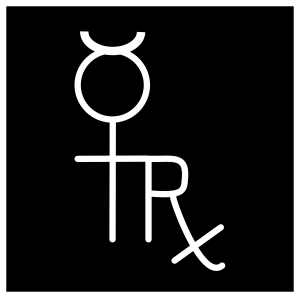 Isaac Newton is considered one of the greatest minds of the Enlightenment and the founder of modern physics. Along with Gottfried Wilhelm Leibniz, he set the foundations for calculus. He is best known for his observations on how gravity behaves, the so-called laws of gravity. As Professor Richard Wolfson of Middlebury College emphatically put it during a lecture on modern physics, Newton stated for the very first time that the laws on earth are the same for the rest of the universe.I don’t want to diminish Newton’s standing as one of the greatest contributors to math and physics, but listening to this lecture I couldn’t help but think how wrong is the assumption that Newton was the first to run across this principle. This is a very old metaphysical concept, implicit in the literature of the Akkadians and found among the ancient Greeks as well. It is explicitly set out as a cornerstone of alchemical philosophy in “The Emerald Tablet of Hermes,” probably written in the eighth century and attributed to earlier Egyptian sources. This is the teaching that starts out That which is above is as that which is below, and that which is below is as that which is above, for performing the miracles of the one thing.Listening to Professor Wolfson attribute to Newton not only the foundation of calculus and physics but the core of alchemy, I felt inspired to look up the Tablet of Hermes and read it again. So I went to Sacred Texts, where as expected I found several translations. Imagine my amusement at finding one of the earliest English translations to have been done by Newton! This translation is dated 1680, and Newton published his famous physics treatise in 1687. Obviously, Newton’s genius lies in formulating the ancient truths in a scientific and mathematical framework. Here is Newton’s translation of the Hermes tablet:
Isaac Newton is considered one of the greatest minds of the Enlightenment and the founder of modern physics. Along with Gottfried Wilhelm Leibniz, he set the foundations for calculus. He is best known for his observations on how gravity behaves, the so-called laws of gravity. As Professor Richard Wolfson of Middlebury College emphatically put it during a lecture on modern physics, Newton stated for the very first time that the laws on earth are the same for the rest of the universe.I don’t want to diminish Newton’s standing as one of the greatest contributors to math and physics, but listening to this lecture I couldn’t help but think how wrong is the assumption that Newton was the first to run across this principle. This is a very old metaphysical concept, implicit in the literature of the Akkadians and found among the ancient Greeks as well. It is explicitly set out as a cornerstone of alchemical philosophy in “The Emerald Tablet of Hermes,” probably written in the eighth century and attributed to earlier Egyptian sources. This is the teaching that starts out That which is above is as that which is below, and that which is below is as that which is above, for performing the miracles of the one thing.Listening to Professor Wolfson attribute to Newton not only the foundation of calculus and physics but the core of alchemy, I felt inspired to look up the Tablet of Hermes and read it again. So I went to Sacred Texts, where as expected I found several translations. Imagine my amusement at finding one of the earliest English translations to have been done by Newton! This translation is dated 1680, and Newton published his famous physics treatise in 1687. Obviously, Newton’s genius lies in formulating the ancient truths in a scientific and mathematical framework. Here is Newton’s translation of the Hermes tablet:
Tis true without lying, certain & most true.That wch is below is like that wch is above & that wch is above is like yt wch is below to do ye miracles of one only thing.And as all things have been & arose from one by ye mediation of one: so all things have their birth from this one thing by adaptation.The Sun is its father, the moon its mother,the wind hath carried it in its belly, the earth its nourse.The father of all perfection in ye whole world is here.Its force or power is entire if it be converted into earth.Seperate thou ye earth from ye fire, ye subtile from the gross sweetly wth great indoustry.It ascends from ye earth to ye heaven & again it desends to ye earth and receives ye force of things superior & inferior.By this means you shall have ye glory of ye whole world & thereby all obscurity shall fly from you.Its force is above all force. ffor it vanquishes every subtile thing & penetrates every solid thing.So was ye world created.From this are & do come admirable adaptaions whereof ye means (Or process) is here in this.Hence I am called Hermes Trismegist, having the three parts of ye philosophy of ye whole world.That wch I have said of ye operation of ye Sun is accomplished & ended.
Footnote: Here’s another article I found while preparing this one, which talks about the scientific community’s uneasiness with the metaphysical influences on Newton’s work, observing “Newton’s alchemy is a bit of an embarrassment to modern scholars.”



